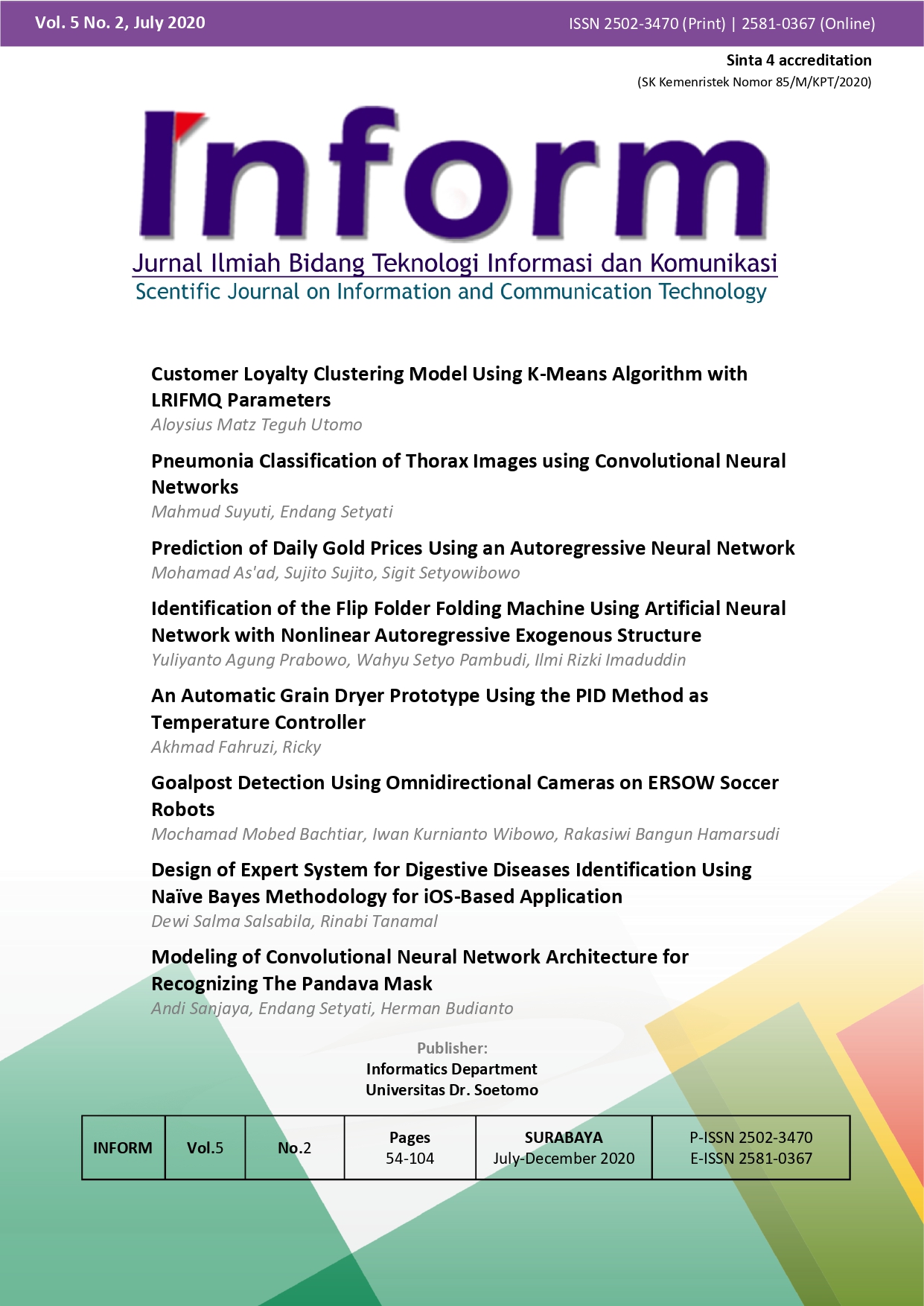[1] Purwadaria, H.K., “Problems and Priorities of Grain Drying in Indonesia, in: Grain Drying in Asia. Proceedings of an International Conference held at the 74 FAO Regional Office for Asia and the Pacificâ€, Bangkok, Thailand, ACIAR Proceedings No. 71 (1995). pp. 201–209, 1995.
[2] Nugraha, S., Thahir, R., Sudaryono, “Keragaan Kehilangan Hasil Pascapanen padi pada 3 agroekosistemâ€. Buletin Teknologi Pascapanen Pertanian. Vol 3. p: 42 – 49, 2007
[3] Napitu, Y. O, “Desain Model Pengering Spouted Bed Dua Dimensi untuk Pengeringan Gabahâ€(Tesis). Institut Pertanian Bogor, Bogor, 2016
[4] Iswari, K, Survei Mutu Beras di Sumatera Barat. “Kerja Sama Balai Pengkajian Teknologi Pertanian Sumatera Barat dengan Dinas Sosial Provinsi Sumatera Baratâ€, 2011
[5] Wongpornchai, S., Dumri, K., Jongkaewwattana, S., Siri B, “Effects Of Drying Methods And Storage Time On The Aroma And Milling Quality Of Rice (Oryza Sativa L)â€. Journal of Food Chemistry. Vol 87(3). p:407-414, 2003
[6] Nugraha, S., Thahir, R., Sudaryono. 2007. “Keragaan Kehilangan Hasil Pascapanen padi pada 3 agroekosistemâ€. Buletin Teknologi Pascapanen Pertanian. Vol 3. p: 42 – 49.
[7] Teguh Hidaya, “Rancang Bangun Prototype Penngeringan Padi Otomatis Berbasis Mikrokontroler AT89S52â€. Seminar Nasional TEKNOKA_FT UHAMKA, 30 Januari 2016.
[8] Akhmad Fahruzi.,Andy Suryowinoto, “Implementasi Kontrol PID Pada Mesin Penetas Telur Burung Muraiâ€. Jurnal Ilmiah Bidang Teknologi Informasi dan Komunikasi Vol. 4 No. 1, Januari 2019.
[9] Ebiet Van Heriyanto, Harianto, Pauladie Susanto. “Rancang Bangun Alat Pengering Gabah dengan Pengendali suhu dan kelembaban Ruang Berbasis Arduino Uno R3,†JCONES Vol.3, No 1(2014) 120-125.
 Abstract views: 808
,
Abstract views: 808
,
 PDF downloads: 500
PDF downloads: 500
 An Automatic Grain Dryer Prototype Using the PID Method as Temperature Controller (Bahasa Indonesia) downloads: 0
An Automatic Grain Dryer Prototype Using the PID Method as Temperature Controller (Bahasa Indonesia) downloads: 0
 Copyright Transfer Agreement (Bahasa Indonesia) downloads: 0
Copyright Transfer Agreement (Bahasa Indonesia) downloads: 0
 Ethical Statement (Bahasa Indonesia) downloads: 0
Ethical Statement (Bahasa Indonesia) downloads: 0














